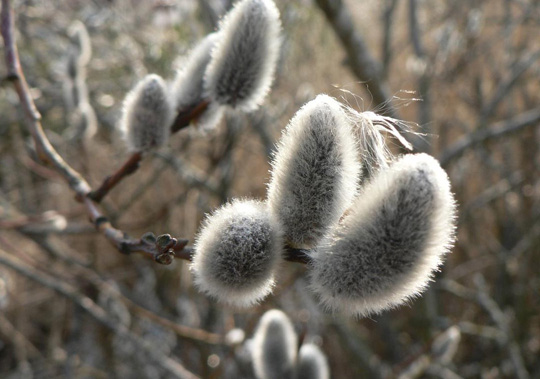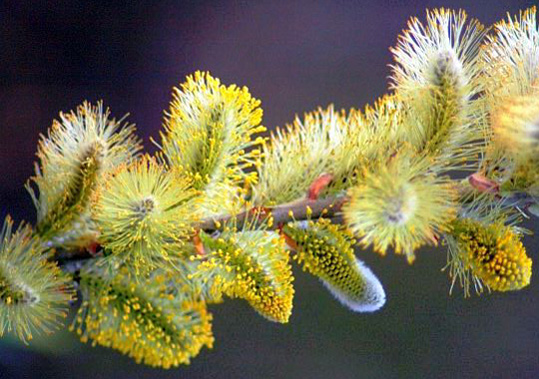The American Pussy Willow (Salix discolor) is a plant that is near and dear to my heart. Perhaps, it is because the Pussy Willow is one of the very first harbingers of spring. Every year I wait with baited breath for the emergence of the tiny silver-grey buds from their hard brown shells before they transform into an inflorescence of yellow. I then prune off a few branches studded with the furry catkins, and spread them throughout my home in celebration of the changing seasons. When the Pussy Willow is blooming, then I know its spring.


It’s also one of the few plants I’ve gotten my boyfriend to remember. His immediate incredulity in reference to the common name (he thought I was joking) has left an indelible mark. Hey, at least I’ve taught him to recognize ONE plant.
Anyway, if any of you were wondering (like he was) why they are referred to as Pussy Willows, it because they develop catkins early in spring which are covered in a fine, greyish fur, leading to a fancied likeness to tiny cats. In fact, this likeness has been referenced time and again across the centuries in stories, poems, and songs.
One particular favorite of mine is a Polish legend that claims the furry catkins are actually derived from the rescue of small kittens from a fast moving river. The story claims that upon hearing the cries of the mother cat for her kittens, the nearby willows were saddened, and reached down their graceful branches as lifelines for the tiny felines. Gripping tightly to the branches, the kittens were borne safely to shore, and back to their mother. Hence forward, as proof of their great deeds, the willow branches sprout tiny fur-like buds every spring where the kittens once clung.

In the same vain, there are dozens of other stories that claim the buds to be cat tails, ears, or toes, like “The Willow Cats” by Margaret Widdemer.
THE WILLOW CATS
They call them pussy-willows,
But there’s no cat to see
Except the little furry toes
That stick out on the tree:
I think that very long ago,
When I was just born new,
There must have been whole pussy-cats
Where just the toes stick through—-
And every Spring it worries me,
I cannot ever find
Those willow-cats that ran away
And left their toes behind!
–Margaret Widdemer
For those who want more concrete details, the American Pussy Willow is a native to North America, grows in zones 4-8, reaches a height of 6-15 feet with a width of 4-12 feet, thrives in moist soils, flourishes best in full sun to partial shade, requires little maintenance (pruning every other year or so), and is ridiculously easy to propagate from just a cutting.
If you find pussy willow trees as delightful as I do, contact us at 703-679-8550 today to learn how they can fit into YOUR landscape!
